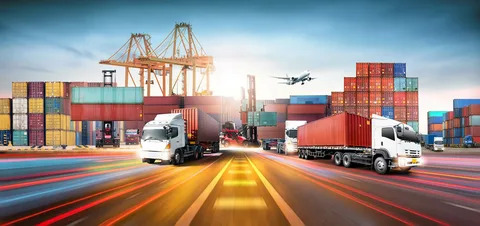In the age of instant gratification, the logistics industry is evolving rapidly to meet rising customer expectations. From same-day deliveries to real-time tracking, on-demand logistics is revolutionizing how goods move across cities, states, and countries. If you’re considering building a logistics app, this guide walks you through the entire journey—from idea to deployment.
By working with the right on demand logistics app development company, you can streamline operations, reduce overhead costs, and gain a significant edge over traditional logistics methods.
Table of Contents
Understanding the Logistics App Landscape
Logistics app development is more than building a mobile tool. It’s about crafting an intelligent, scalable, and real-time solution that addresses multiple pain points—vehicle tracking, route planning, order management, communication, and analytics.
With the help of advanced logistics app development services, businesses are digitizing their delivery workflows to gain full visibility, reduce delays, and meet customer demands with precision.
Step 1: Defining Your Logistics App Idea
The first stage of any successful app starts with a clear concept. Ask yourself:
- Who is the target user (e.g., delivery agents, warehouse managers, customers)?
- What problem does the app solve?
- What services will be offered (e.g., same-day delivery, freight movement, last-mile delivery)?
- Do you need a customer panel, admin dashboard, and driver interface?
Once these basics are outlined, a specialized transport and logistics app development team can help shape your concept into a practical roadmap.
Step 2: Market Research and Competitor Analysis
Before jumping into design, research the market. Analyze leading logistics apps like Uber Freight, Convoy, and Deliveree. Identify their features, flaws, and business models. This will help your app stand out.
A knowledgeable logistics app development company can assist with technical feasibility studies and competitive benchmarking to ensure your app meets current and future demands.
Step 3: Choosing Core Features
Your app’s success lies in its functionality. Here are essential features your logistics app should include:
- Real-Time GPS Tracking
- Smart Route Optimization
- Order Scheduling & Dispatch
- In-App Communication
- Live Delivery Updates
- Digital Proof of Delivery (eSignatures & Images)
- Analytics Dashboard
- Multi-User Access (Admin, Driver, Customer)
Each feature adds a layer of efficiency. Make sure to hire logistics app developers with experience in integrating these components securely and seamlessly.
Step 4: UI/UX Design Planning
A well-designed logistics app balances aesthetics with usability. The interface should be intuitive for all users—especially drivers and dispatchers who rely on it throughout the day.
When you hire logistic app development services, ask for wireframes and clickable prototypes early in the process. This avoids rework and ensures a smoother experience.
Step 5: Choosing the Right Tech Stack
A strong foundation is crucial for app stability and scalability. A typical logistics app stack includes:
- Frontend: React Native, Flutter, Kotlin, Swift
- Backend: Node.js, Django, Laravel
- Database: Firebase, PostgreSQL, MongoDB
- Maps & Navigation: Google Maps API
- Payments: Stripe, PayPal
- Hosting: AWS, Azure, Google Cloud
If you’re looking for local development support, opting for mobile application development in Florida offers timezone alignment and quicker collaboration cycles.
Step 6: Development & Testing
Development usually begins with the minimum viable product (MVP) to launch quickly and collect feedback. Testing is equally critical—ensure your app undergoes:
- Functional Testing
- UI/UX Testing
- Security Testing
- Load & Performance Testing
This ensures your platform runs smoothly across devices and conditions before public release.
Step 7: App Launch and Post-Deployment Support
Once developed and tested, your app is ready for launch. But the journey doesn’t end there. Post-launch support is crucial for:
- Bug fixes and performance monitoring
- Feature updates based on user feedback
- Server scaling as your user base grows
Partnering with a reliable on demand logistics app development company ensures long-term support and evolution of your app.
Cost of Developing an On-Demand Logistics App
The cost can vary depending on:
- App complexity
- Feature count
- Platform (iOS, Android, or both)
- Developer location
- Post-launch support needs
Here’s a rough estimate:
- MVP App: $15,000 – $30,000
- Mid-level App: $30,000 – $60,000
- Advanced App: $70,000+
For tailored solutions, it’s best to consult a company offering logistics app development services with cost transparency and detailed proposals.
Final Thoughts
Building an on-demand logistics app is a transformative move that can future-proof your business. From reducing manual errors to delighting customers with live updates, the benefits are game-changing. However, execution is key.
Whether you’re starting from scratch or modernizing an existing system, the right development partner can turn your idea into a high-performing digital solution. If you’re looking to get started with local collaboration, mobile application development in Florida offers both expertise and geographic convenience.



